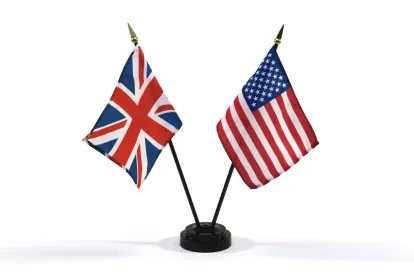In July 2013, the Stamp Duty Land Tax (SDLT) case of Project Blue Ltd v. HM Revenue & Customs, concerning the high-profile development of Chelsea Barracks, was the first real test of the SDLT’s broad anti-avoidance rule (Section 75A of the Finance Act 2003). This advisory considers why Project Blue has attracted mass media comment and why the real estate sector should take note of it.
The Transaction
The transaction (including the SDLT scheme) can be summarised as follows:
-
In 2007, Project Blue Ltd (P), a Guernsey company (then a joint venture between Qatari Diar and CPC Group), agreed to purchase the freehold of Chelsea Barracks from the Ministry of Defence (MoD) for £959 million.
-
In January 2008, P entered into a sale and leaseback agreement with a Qatari financial institution specialising in Sharia-compliant finance (“Bank”), together with put and call options under which P could repurchase the freehold at the expiry of a 999-year “finance period.”
-
The MoD transferred the freehold to P, P transferred the freehold to Bank and Bank leased the property back to P.
P took the position that no SDLT was payable because of the combined effect of the sub-sale relief rules and the provisions dealing with Sharia-compliant finance structures. HM Revenue & Customs (HMRC) disagreed and raised an enquiry. The First Tier Tribunal’s decision in the litigated case was that Section 75A applied, with the effect that the scheme did not work. Whilst this decision may not be the final word in this case (an appeal may be expected), the immediate result and the tribunal’s reasoning raise some very interesting points for real estate investors.
Why Has Project Blue Attracted Wide Public Interest?
Although a number of recent SDLT cases have done much to place SDLT (and its avoidance) in the public domain, Project Blue has attracted more “mass media” coverage than most cases.
One reason for the wider press reporting of Project Blue was that the application of Section 75A to the SDLT scheme had the effect of increasing the SDLT bill to at least £12 million higher than if the scheme had not been used at all. This was because the tribunal ultimately held that SDLT was payable on the £1.25 billion paid by Bank to P under the sub-sale which funded the transaction (i.e., SDLT of £50 million), rather than simply in respect of the amount paid to the MoD (i.e., SDLT of £38 million). Treasury Minister David Gauke took the opportunity to highlight this point by saying, “the message is clear that entering into a tax avoidance scheme can cost more than paying the original tax bill.”
The popular press has also picked up on the £85 million of additional SDLT now at stake in other cases that HMRC says are affected by the result in Project Blue (24 similar commercial transactions and approximately 900 mass market residential cases). What remains to be seen is whether there are material factual differences in these cases and whether they are technically defensible. However, it seems that although the stated aim of Section 75A when it was introduced was to eliminate widespread SDLT avoidance, its deterrent effect may not have been as strong as HMRC would have wished. Project Blue is itself an illustration of this, given that the transaction was undertaken only a few months after Section 75A came into effect in December 2006.
However, as noted in previous advisories, there has been a sea change in the area of SDLT schemes. As a result of anti-avoidance law changes, increased disclosure requirements and HMRC’s extreme intolerance of SDLT schemes, it is very unlikely that an SDLT scheme like Project Blue would be used in a similarly high-profile transaction again today. To put this into context, David Gauke highlighted Project Blue as one of the 10 largest tax avoidances tackled through the courts this year and HMRC also claimed to have protected a total of £1 billion in tax in this way in the first six months of 2013.
A further timely illustration of this point comes in the form of HMRC’s victory in HMRC v. DV3 RS Limited Partnership, decided only a few days after Project Blue. DV3 was another sub-sale scheme case (pre-dating the anti-avoidance rule in Section 75A) which HMRC pursued to the Court of Appeal; the result will no doubt be pleasing to HMRC.
Lessons to Be Learned
1. Project Blue Is Not Just Relevant to SDLT Schemes
The judge in Project Blue noted that there is no “motive defence” in Section 75A (of the type often found in other forms of anti-avoidance legislation). On this basis, he concluded that, although Section 75A is an anti-avoidance provision, there is no requirement to show a tax avoidance motive or purpose in order for Section 75A to apply. This also means that a taxpayer cannot escape Section 75A simply by arguing that SDLT avoidance was not one of the main benefits of the transaction or that it was a “commercial” transaction.
If the First Tier Tribunal’s approach is followed, Section 75A obviously has the potential to catch “innocent” and genuinely commercial transactions. It could also reduce the comfort that may have been drawn from HMRC’s published guidance on what it generally regards as an “acceptable” transaction in terms of Section 75A. For this reason, there may be benefit in real estate investors carrying out health checks, particularly in the context of structured transactions or where particular SDLT reliefs have been relied on.
2. Motive Is Always Relevant
Having stated that motive is not required for Section 75A to apply, the judge still proceeded to consider the motives for the transaction. Regardless of any perceived inconsistency, it could not have been a surprise that a tax court would scrutinise the motives behind the structuring of a complex transaction.
The judge rejected arguments by Project Blue that its actions were “wholly commercial” and “happened to lead to a particular tax result which was favourable.” He stated that the fact that a transaction had commercial purposes did not mean that Project Blue did not also have a tax avoidance motive.
Two related observations made by the judge could cause some taxpayers alarm. First, he noted that the disclosure of the scheme by Project Blue’s legal advisers under the Disclosure of Tax Avoidance Scheme (DOTAS) rules also suggested a tax avoidance motive, since the DOTAS rules only apply if one of the main benefits of the transaction was tax avoidance. This does not take into account so-called “protective” or precautionary disclosures. Second, the judge also appeared to take a dim view of the existence of certain legally privileged (confidential) documents, such as a “tax structure paper” prepared by Project Blue’s legal advisers. The point to note here is that although the use of a tax scheme in this case may have been thought to be obvious, clearly the mere act of taking legal advice which is protected by legal privilege ought not of itself be taken to suggest tax avoidance.
3. Burden of Proof
It was established by the tribunal that, in relation to Section 75A, the burden rests with the taxpayer to show that it does not have a tax avoidance motive. Some observers have contrasted Section 75A with the UK’s new General Anti-Avoidance Rule (GAAR), which came into force last month and under which the burden is on HMRC. However, it is doubtful that this technical point will make a significant practical difference in the majority of cases. In addition, it is not clear that HMRC would resort to an attack under the GAAR if Section 75A can be deployed without a need to show motive.
4. Disclosure of the SDLT Scheme
Increasingly, HMRC takes the opportunity to celebrate legal victories in cases related to disclosed transactions. Project Blue falls into this pattern. As noted above, the transaction in Project Blue was disclosed under the DOTAS rules. Therefore, HMRC will regard the identification of this case as a sign that the DOTAS rules are working and may expect that the deterrent effect of disclosure requirements increases with each such victory.




 />i
/>i

